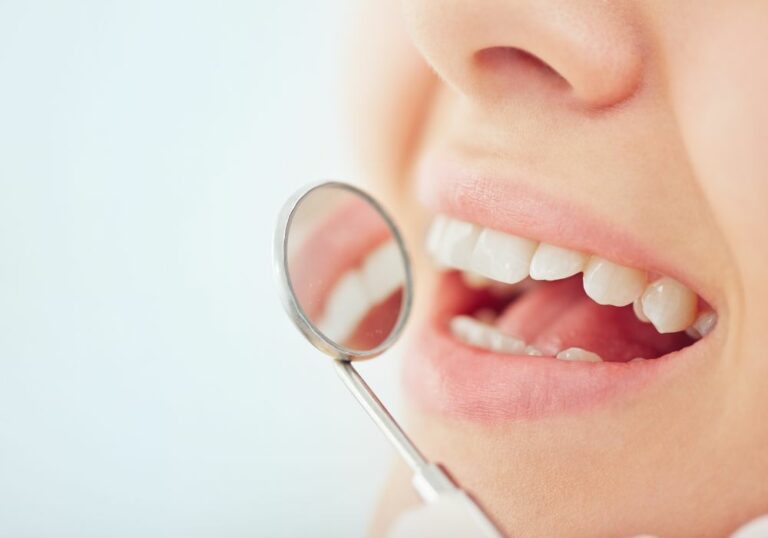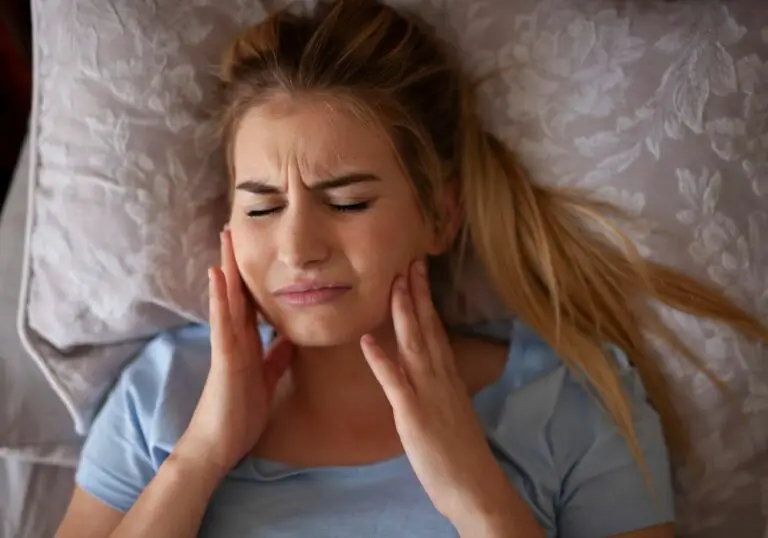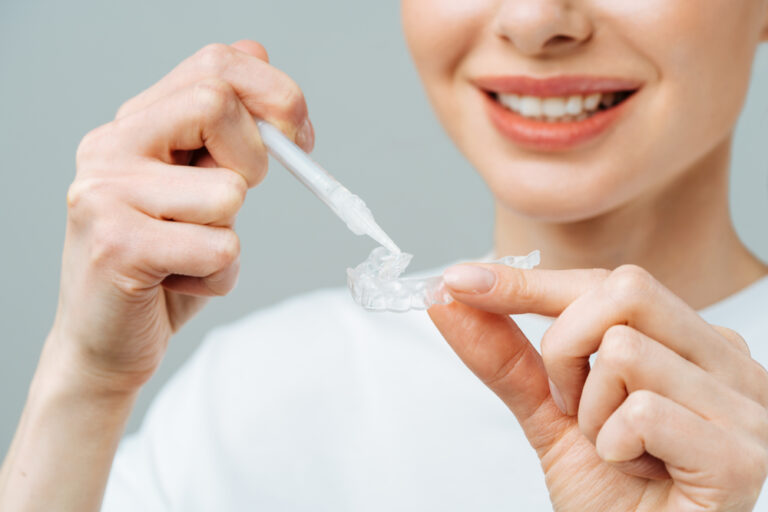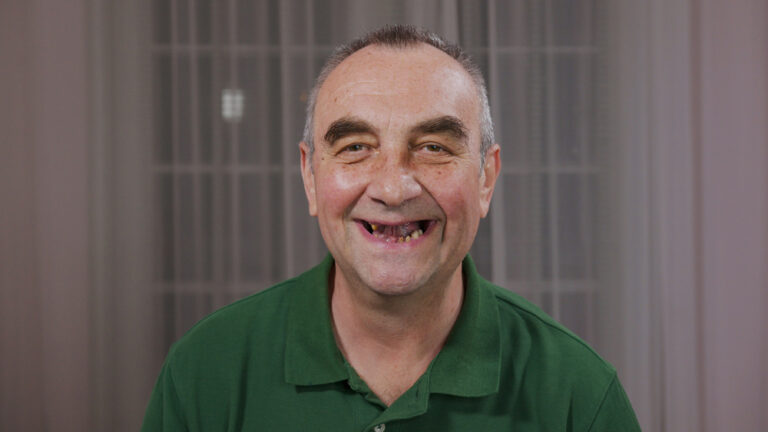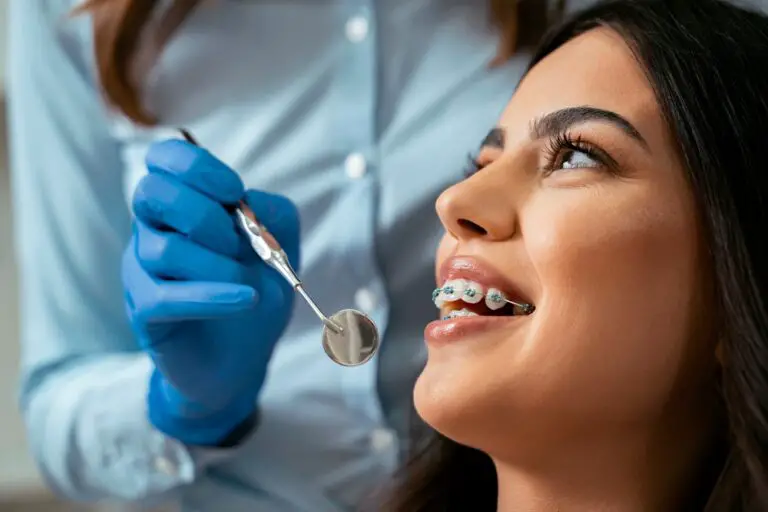Are you a parent wondering when your child’s top teeth will start coming in? Or are you someone experiencing the discomfort of teething yourself? Either way, it’s important to know the signs and symptoms of top teeth eruption so you can take the necessary steps to alleviate any pain or discomfort.
Typically, the first teeth to come in are the bottom front teeth, followed by the top front teeth. But when can you expect the top teeth to start making an appearance? On average, the top teeth will start to erupt between 8-12 months of age, although it can vary from child to child. It’s important to note that teething can begin as early as 3 months and as late as 14 months, so don’t worry if your child’s teeth aren’t coming in at the exact same time as their peers.
Understanding Teething

Teething is a natural process that babies go through as their teeth emerge through their gums. It usually occurs between 6 and 24 months of age, with most babies starting to get their first teeth at around 6 months. However, every baby is different, and some may start teething earlier or later than others.
Signs of Teething
There are several signs that your baby is teething. These can include:
- Excessive drooling
- Irritability and fussiness
- Difficulty sleeping
- Loss of appetite or increased hunger
- Swollen or tender gums
- Chewing on objects or fingers
- Ear rubbing or pulling
- Facial rash or redness
It’s important to note that not all babies experience the same symptoms of teething, and some may not show any signs at all. However, if your baby is experiencing any of these symptoms, it’s likely that they are teething.
Teething Timeline
Teething usually starts with the bottom front teeth, followed by the top front teeth. The rest of the teeth will then emerge in a specific order, although the timing can vary from baby to baby. Here’s a rough timeline of when you can expect your baby’s teeth to come in:
| Age | Teeth |
|---|---|
| 6-10 months | Bottom front teeth (central incisors) |
| 8-12 months | Top front teeth (central incisors) |
| 9-13 months | Top lateral incisors |
| 10-16 months | Bottom lateral incisors |
| 13-19 months | First molars |
| 16-23 months | Canines (cuspids) |
| 23-33 months | Second molars |
It’s important to remember that this is just a rough guide, and some babies may get their teeth earlier or later than this timeline. If you have any concerns about your baby’s teething, it’s always best to speak to your pediatrician.
In summary, teething is a natural process that all babies go through. While it can be uncomfortable for your baby, there are several signs that can help you identify when they are teething. By understanding the teething timeline, you can prepare yourself for when your baby’s teeth start to emerge.
Top Teeth Eruption
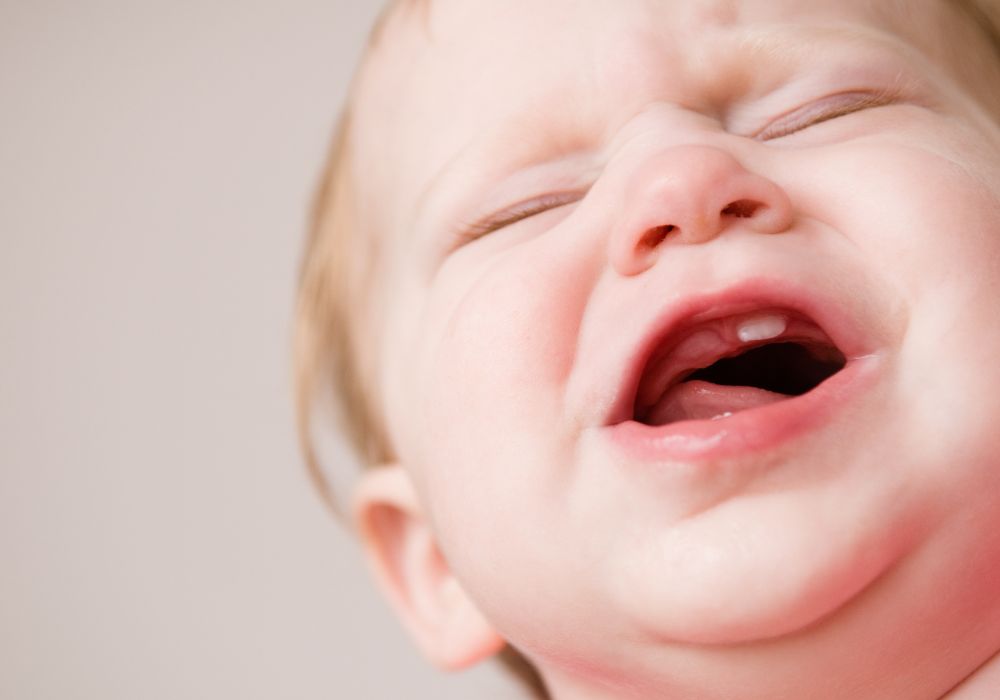
When your baby’s top teeth start to erupt, it can be an exciting and sometimes challenging time. Knowing what to expect can help you prepare for any changes in your baby’s behavior and provide them with the necessary care.
Physical Indicators
The eruption of top teeth can be accompanied by several physical indicators. You may notice that your baby’s gums are swollen, red, and tender to the touch. They may also drool more than usual and have a slight fever. Some babies may experience diarrhea or a rash around their mouth.
You can help alleviate your baby’s discomfort by giving them a cold teething ring or a clean, damp washcloth to chew on. Over-the-counter pain relievers, such as acetaminophen or ibuprofen, can also be used, but be sure to consult with your pediatrician first.
Behavioral Changes
The eruption of top teeth can also cause changes in your baby’s behavior. They may be more irritable and fussy than usual, have trouble sleeping, and refuse to eat or drink. They may also rub their ears or cheeks and pull at their hair.
To soothe your baby, try rocking them gently or singing a lullaby. You can also offer them a pacifier or a favorite toy to distract them. If your baby is having trouble sleeping, try adjusting their bedtime routine or giving them a warm bath before bed.
In conclusion, the eruption of top teeth can be a challenging time for both you and your baby. By knowing what to expect and providing them with the necessary care and comfort, you can help make the process as smooth as possible.
Teething Relief
When your baby starts teething, they may experience discomfort and pain. Fortunately, there are several ways to ease their discomfort. Here are some home remedies and medical options that can provide teething relief for your little one.
Home Remedies
- Rub your baby’s gums: Gently rub your baby’s gums with a clean finger or a wet gauze pad. The pressure can help soothe your baby’s sore gums.
- Use a cold object: A cold spoon or a chilled teething ring can help numb your baby’s gums and provide relief. However, make sure not to freeze the teething ring as it can hurt your baby’s gums.
- Offer cold foods: Cold foods such as yogurt, pureed fruits, or cold applesauce can help soothe your baby’s gums. Make sure the food is not too cold and always supervise your baby while they eat.
- Provide a distraction: Distract your baby with a new toy or a fun activity to take their mind off the discomfort.
Medical Options
- Over-the-counter remedies: You can use teething gels or drops that contain a numbing agent to provide relief. However, make sure to follow the instructions carefully and avoid using too much.
- Pain relievers: If your baby is experiencing severe pain, you can give them infant pain relievers such as acetaminophen or ibuprofen. However, always consult with your pediatrician before giving any medication to your baby.
- Teething toys: Teething toys can help massage your baby’s gums and provide relief. Look for toys that are made of soft, flexible materials and are easy for your baby to hold.
In conclusion, teething can be a challenging time for both you and your baby. However, with the right teething relief options, you can help ease your baby’s discomfort and make the process more manageable.
When to Consult a Pediatrician

If you notice any unusual symptoms or delays in your child’s teething process, it may be time to consult a pediatrician. Here are some situations where you should seek professional advice:
Delay in Teething
While the timing of teething can vary from child to child, if your child has not started teething by 12 months old, it may be a cause for concern. A pediatrician can examine your child and determine if there are any underlying medical issues that may be causing the delay.
Extreme Symptoms
While some discomfort and irritability during teething is normal, if your child is experiencing extreme symptoms such as high fever, diarrhea, or vomiting, it may be a sign of a more serious issue. In these cases, it is important to seek medical attention immediately.
Additionally, if you notice any signs of infection or abnormalities in your child’s teeth or gums, such as discoloration or swelling, it is important to consult a pediatrician as soon as possible.
Remember, every child is different and there is no one-size-fits-all approach to teething. If you have any concerns or questions about your child’s teething process, don’t hesitate to reach out to your pediatrician for guidance and support.
Frequently Asked Questions
What are the signs that my baby’s top teeth are coming in?
The signs that your baby’s top teeth are coming in include drooling, fussiness, and irritability. Your baby may also have swollen or tender gums, and may be biting or rubbing their gums to relieve the pressure.
Is it normal for a baby’s side teeth to come in before their front teeth?
Yes, it is normal for a baby’s side teeth, also known as the first molars, to come in before their front teeth. The first molars usually come in around 12-14 months of age, while the front teeth, or incisors, usually come in around 6-8 months of age.
Why are my baby’s teeth coming in late?
There can be several reasons why your baby’s teeth are coming in late, including genetics, premature birth, and nutritional deficiencies. If you are concerned about your baby’s teeth, it is best to consult with your pediatrician or dentist.
Can a baby’s teeth come in the wrong order?
While it is rare, a baby’s teeth can come in the wrong order. This can be due to genetics or other factors. If you notice that your baby’s teeth are coming in out of order, it is best to consult with your pediatrician or dentist.
What do the gums look like when top teeth are coming in?
When top teeth are coming in, your baby’s gums may appear swollen, red, or tender. You may also notice small bumps or ridges on the gums where the teeth are starting to come through.
What can I expect when my baby’s teeth start coming through?
When your baby’s teeth start coming through, you can expect some discomfort and fussiness. You can help soothe your baby’s discomfort by giving them a teething ring or a cold washcloth to chew on. It is also important to start brushing your baby’s teeth as soon as they come in to promote good oral hygiene habits.


